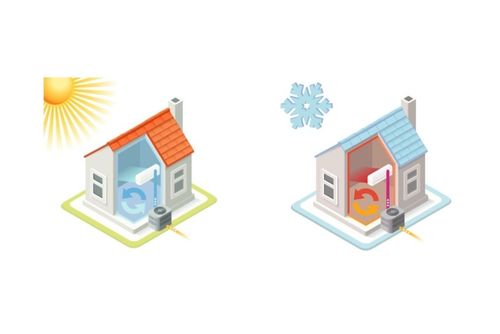Advantages of aerothermal energy
Advantages of aerothermal energy
Although it's true that installing an aerothermal system requires a greater initial investment, the savings it generates compared to other heating and cooling technologies allow you to amortize this in a short period of time.
Outstanding energy efficiency
Outstanding energy efficiency
There are systems that only require 1 kW of electricity to produce between 3 and 5 kW of heat, leading to a significant reduction on power bills in one of the areas that consumes the most energy — heating and cooling.
Extremely versatile
Extremely versatile
Apart from heating and cooling the home, the fact that this system also provides hot water maximizes its usefulness and makes it a more complete solution that can be used year round.
Air quality
Air quality
As no combustion is required, no nitrogen oxide (NOx) or sulfur oxide (SOx) particles are emitted, which has a positive impact on air quality.
Silent
Silent
The indoor unit barely makes any sound.
Simple maintenance
Simple maintenance
The compressors have a very long life and can be easily replaced by technicians.
Safe
Safe
They don't require deposits for holding fuel, like conventional boilers, making them much safer.



